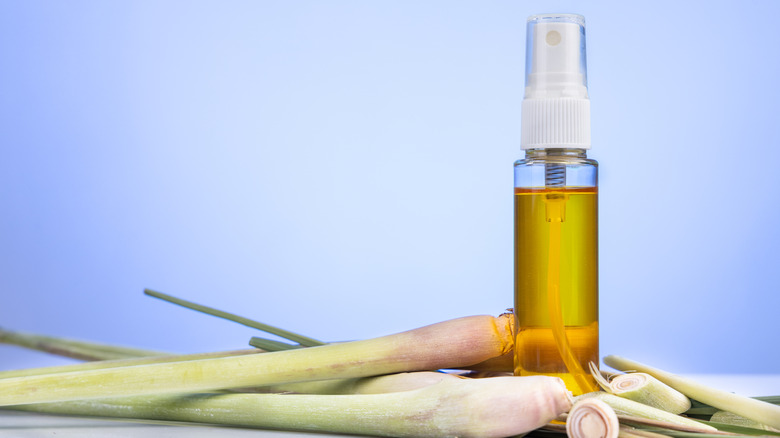DIY Lemongrass Hacks To Curb Your Mosquito Problem Effectively
To state the obvious, mosquitos suck — literally and figuratively. Sometimes, it seems like the only things we can do is load up our bodies with DEET or end the picnic early and head inside. But nobody wants to smell like bug spray, and no one wants to spend the summer staring at the sun through a window, so let's look at a third option: Lemongrass. This sweet-smelling plant might be your new secret ingredient for dealing with a mosquito problem.
Lemongrass is native to tropical and subtropical regions in Southeast Asia and Australia, where it's frequently used as a cooking ingredient. The plant has a little-known secondary skill set — protecting your body from bugs with its soothing scent that repels mosquitos like magic. Compounds found in several lemongrass plant species cover up the smells mosquitos crave and replace them with a relaxing citrusy scent that will leave you feeling fresh and bite-free.
Not only does lemongrass help against mosquitos, but it might also help you repel fleas and ticks. Unfortunately, repelling mosquitos is not as simple as planting more lemongrass. You'll also need to learn how to cultivate the grass in a way that properly repels biting insects. So, let's take a closer look at how to turn lemongrass into oils, sprays, and bug repellents directly from your home. The plant alone might not be enough to stop mosquitos, but incorporating these techniques into your gardening plans can help you take back your time outside.
How to use lemongrass as mosquito repellent
All methods of activating lemongrass's mosquito-repellent properties start with crushing the plant. Breaking apart the leaves releases the key plant oils that repel mosquitos. So, the easiest lemongrass hack is to simply squeeze the juices out by hand and apply them directly to your skin. This is a great way to get some immediate mosquito repellent if you're out working in the garden, but it's also the least efficient method of using lemongrass as a repellent. To take your DIY lemongrass repellent a step further, you can turn it into an oil or boil it down into a spray after crushing up the leaves.
For a DIY lemongrass oil, soak your lemongrass in a jar with carrier oil for a few days before filtering out the stalks using cheesecloth. An even easier way to use your lemongrass is to boil bunches of the plant in water until the leaves turn yellow. Let the liquid cool overnight, then put it into a spray bottle for a gentle lemongrass mist.
You can combine either one of these concoctions with oils like peppermint to fend off gnats and mosquitos in the same spray. If you don't have any lemongrass plants, you can also buy lemongrass essential oil — typically available wherever aromatherapy ingredients are sold. Add a few drops for every three ounces of volume in your bottle and confidently head to your backyard, and don't forget to reapply with a quick spritz at least once per hour.

